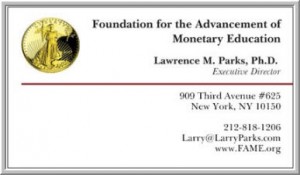The Fed believes that Zero interest-rate policy (ZIRP) will boost the economy by increasing credit creation, making it more profitable to build factories, start businesses, with increased demand and employment to follow.
ZIRP, a euphemism for facilitating the creation of legal tender irredeemable paper-ticket-electronic make-believe money out of nothing, does bring forward sales of some consumer goods, as well as some houses. However, a better case can be made that ZIRP boosts the economy of China, making it more profitable to build factories in China, with increased employment in China and concomitant decreases in U.S. employment, wages and demand. This is the very opposite of the Fed’s stated goals.
How is this possible?
Labor has always been, and continues to be, in competition with capital. Capital can be accumulated only by saving. It cannot be created out of nothing by a prima facie unconstitutional banking cartel. Capital is what is left over after one consumes what one has produced.
To compensate savers for lending and for foregoing use of their capital, along with the risk that a loan may default, borrowers pay interest. Many investments anticipate labor-saving devices, e.g., automation or a tool that economizes on labor, such as an electric hammer. Many years ago when I began working for IBM, every proposal to sell IBM equipment included a strong case for “headcount reduction.”
Suppose an industrialist is considering using debt to either automate a business he owns or to start a new one. If he perceives that the rate of interest is too high to offset the risk and the time horizon for an investment to yield enough cash flow to service and repay debt and with a profit left over, he will not borrow. He will not start a new business. If he owns one, he will not automate it and will continue to employ labor.
But, if a business can be automated with equipment financed at an interest rate approaching zero, and that equipment will save on labor, the incentive to replace labor is overwhelming. In the best case, some workers are laid off. In the worst case, the entire enterprise is moved offshore, e.g., to China.
Worse, ZIRP gives a potential competitor to an existing capital intensive business motivation to go into business with a much reduced cost of capital. For example, a newly formed budget airline could undercut the fare structure and possibly put out of business a legacy—and unionized—airline that was financed with a much higher cost of capital.
Moreover, the availability of ZIRP not only may displace workers, it keeps a lid on wage increases. For example, “Panera Bread restaurants will deploy touchscreen kiosks as a replacement for human order takers in its 1,800 fast-casual restaurants.” The technology “cost about $125,000 per store.”
Without ZIRP, the R&D and manufacturing to produce the kiosks might not have been undertaken or the kiosks might have been much more expensive, i.e., the hurdle rate to displace labor might have been much higher.
With ZIRP, the cash flow to finance Panera Bread’s kiosks is reduced. The result: in the best case order takers cannot get wage increases; in the worst case they lose their jobs.
There’s more. ZIRP loans are available mostly to very large credit-worthy businesses. Smaller businesses are effectively frozen out. But it’s smaller businesses that are the engine of employment growth. Is this a factor why the percentage of people employed is approaching multi-decade lows?
Finally, as capital is substituted for labor and labor’s wages are kept in check, there is less money available for workers to spend, thereby decreasing demand for goods and services. Labor’s standard of living is decreased. The result is the antithesis of what the Fed claims that ZIRP will produce.
But what about the Fed’s “inflation target?” The largest cost component of almost all goods and services is labor. By keeping a lid on wages, the costs of producing goods and services are depressed. In other words, Fed policy is de facto suppressing wage inflation, and this de facto suppresses prices for goods and especially services.
The monetary remedy has been offered by former Fed Chairman Paul Volcker: “A global economy requires a global currency.” An honest and acceptable global currency will do away with interest rate manipulation, currency manipulation, QE, and all the other machinations that central bankers have introduced to fix problems that they create in the first place.
The issue at hand for those in the productive sector—manufacturers, Organized Labor, small countries, importers, exporters, international investors, ordinary working people everywhere—is to define what the criteria for the global currency should be, and then work to make a global currency a reality.
Dr. Larry Parks is the Executive Director of the Foundation for the Advancement of Monetary Education [1], and the author of What Does Mr. Greenspan Really Think? [2]
FollowShare
